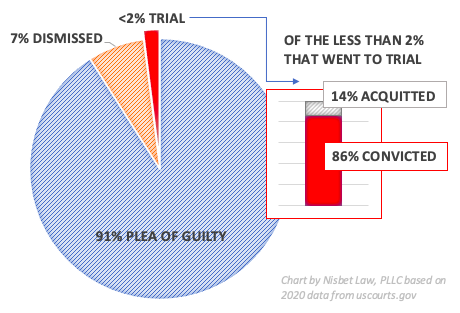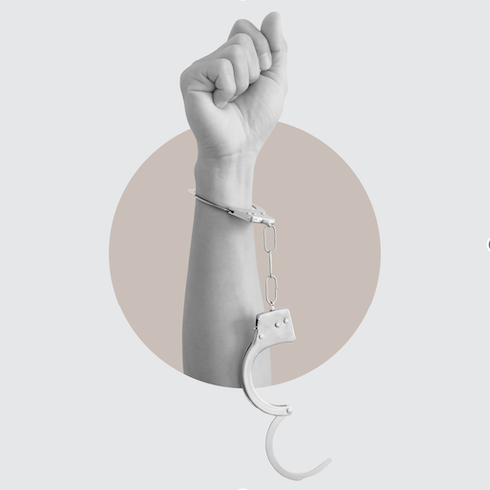ADDICTION IN THE SYSTEM | The Need for Treatment

“Jails have become a revolving door for individuals struggling with mental health and substance use disorders. More than 10 million individuals pass through jails around the country annually, with at least half of those individuals having substance use disorders, half of whom are opioid abusers. Individuals suffering with mental health and substance use disorders come in and out of the jail, with arrests, incarceration, and release to the community, where the abuse restarts and the cycle continues when they commit another crime. Without effective intervention, this drives our nation’s crime rate dramatically, while those who are most vulnerable remain sick.” [1]
[1] National Sheriffs’ Association & National Commission on Correctional Health Care. (2018). Jail-based medication-assisted treatment: Promising practices, guidelines, and resources for the field. Available from: https://www.sheriffs.org/publications/Jail-Based-MAT-PPG.pdf
TRIAL PENALTY | Guilty Pleas Have Replaced Trials

The Administrative Office of the U.S. Courts maintains data from the Federal United States Judiciary. The chart to the left illustrates the shrinking trial statistics in federal criminal court and, taken together, only a fraction of a percent of total cases go to trial and result in an acquittal for the defendant. This is a trend that has continued for decades.
As a comparison, the Pew Research Center analyzed this same federal judiciary data for fiscal year 2018 and issued a report in 2019 finding “only 2% of federal criminal defendants go to trail and most who do are found guilty” with 90% pleading guilty, 8% dismissed and fewer than 1% winning their cases. The report also compares federal to state proceedings: “If anything,” a 2017 law journal article said, “there is even less likelihood of a case proceeding to trial in state court than in federal court.” The reason, argues the Pew Report: “Experts have offered a range of explanations for the long decline in criminal trials. Among the most common is what critics refer to as the “trial penalty”: Individuals who choose to exercise their constitutional right to trial can face much higher sentences if they invoke the right to trial and lose, according to a 2018 report by the National Association of Criminal Defense Lawyers.” This report is entitled, “The Trial Penalty: The Sixth Amendment Right to Trial on the Verge of Extinction and How to Save It.” The NACDL consists of some 40,000 members, including private criminal defense attorneys, public defenders, defense counsel in the military and law professors. The report highlights the “trial penalty” as discussed as the most common explanation for the decline in criminal trials:
“Guilty pleas have replaced trials for a very simple reason: individuals who choose to exercise their Sixth Amendment right to trial face exponentially higher sentences if they invoke the right to trial and lose. Faced with this choice, individuals almost uniformly surrender the right to trial rather than insist on proof beyond a reasonable doubt, defense lawyers spend most of their time negotiating guilty pleas rather than ensuring that police and the government respect the boundaries of the law including the proof beyond a reasonable doubt standard, and judges dedicate their time to administering plea allocutions rather than evaluating the constitutional and legal aspects of the government’s case and police conduct. […] [O]ver the last fifty years, trial by jury has declined at an ever-increasing rate to the point that this institution now occurs in less than 3% of state and federal criminal cases. […] The virtual elimination of the option of taking a case to trial has so thoroughly tipped the scales of justice against the accused that the danger of government overreach is ever-present. […] The federal courthouse in Manhattan, for example, held only 50 trials in 2015. […] The pressure defendants face to plead guilty can even cause innocent people to plead guilty. Of the 354 individuals exonerated by DNA analysis, 11% had pled guilty to crimes they did not commit[.] […] The trial penalty — the substantial difference between the sentence offered prior to trial versus the sentence a defendant receives after a trial — undermines the integrity of the criminal justice system. […] Mandatory minimum sentences undermine the integrity of plea bargaining (by creating a coercive effect) and the integrity of the sentencing process (by imposing categorical minimums rather than case-by-case evaluation). […] In 2016, 97.3% of defendants in the federal criminal justice system opted to concede their guilt. And in 2017, that number held steady at 97.2%. That means that in recent years fewer than 3% of federal criminal defendants chose to take advantage of one of the most crucial constitutional rights. […] The United States Sentencing Commission’s data on federal sentencing confirms the existence of a trial penalty. In 2015, in most primary offense categories, the average post-trial sentence was more than triple the average post-plea sentence.”
Sources:
1. John Gramlich. “Only 2% of Federal Criminal Defendants Go to Trial, and Most Who Do Are Found Guilty,” Pew Research Center, 2019.
2. Rick Jones, Gerald B. Lefcourt, Barry J. Pollack, Norman L. Reimer and Kyle O’Dowd. “The Trial Penalty: The Sixth Amendment Right to Trial on the Verge of Extinction and How to Save It,” National Association of Criminal Defense Lawyers, 2018.
ALL RISE | The Movement for Treatment Over Punishment

SPECIALTY COURTS. Speciality courts, for example: drug court, mental health court, veteran treatment court programs, may allow qualified participants, approved at the discretion of the District Attorney’s Office, an alternative to prison, probation (which entails a conviction) or deferred disposition (conditions for dismissal). In some circumstances, specialty courts may be able to provide a “pre-trial diversion” to avoid prosecution. Whether the programs are utilized pre- or post-adjudication, the focus is on treatment over punishment.
FROM THE BEGINNING TO TODAY. Judge Herbert Klein, architect of the Miami-Dade Drug Court, started in 1989 and the first of its kind during the war on drugs of the 1980s: “It was a statement by us that human beings are worth saving.” In 1994, the National Association of Drug Court Professionals (NADCP) was formed by leaders of this movement from over 30 communities across the country. In 1997, the National Drug Court Institute was formed in partnership with the White House. According to recent statistics from the NADCP, there are currently over 4,000 treatment courts in the U.S. and they have saved over 1.5 million people resulting in an up to 58% recidivism reduction and an average savings of $6,000 per participant. [1]
RESEARCH: IT WORKS! The National Institute of Justice (NIJ) has also sponsored nationwide research since drug courts’ first inception. One such commissioned study of over 2,000 graduates from 95 drug courts across the country found 83.6% had not been re-arrested / charged with a serious crime at the one-year mark and 72.5% had no arrests at the two-year mark. [2] Bexar County, a leader in this movement, shows even stronger statistics. According to Judge Ernie Glenn, Drug Court Magistrate and Department Head of Felony Drug Court, Re-Entry Court, DWI Court, and Dual Diagnosis Court for District Courts in Bexar County, quoted in a news report in 2018, the 3-year recidivism for Felony Drug Court was just 12.6%. [3]
FIND A SPECIALTY COURT NEAR YOU. Now, more than 30 years after their initial inception, Bexar County has many specialty courts and has set up a Specialty Courts Coalition, posting the courts and eligibility: https://www.bexar.org/CivicSend/ViewMessage/message/146770. Not in Bexar County? The Texas Association of Specialty Courts (TASC) keeps track of courts state-wide: http://www.tasctx.org/court-resources.html. Additionally, the NADCP’s “All Rise” Movement has a dedicated YouTube channel with many moving stories of drug court success: https://www.youtube.com/channel/UCLE0zIYPfVgaaP4TTcyWRDA.
Sources:
[1] National Association of Drug Court Professionals. Drug courts are criminal justice reform [Fact sheet]. https://www.nadcp.org/wp-content/uploads/2021/03/Drug-Court-Fact-Sheet-2020.pdf
[2] Roman, J., Townsend, W., & Bhati, A. S. (2003). Recidivism rates for drug court graduates: nationally based estimates. The Urban Institute. https://www.ojp.gov/pdffiles1/201229.pdf
[3] Jessie Degollado (2018, October 5). “Felony drug court graduates defeat their demons.” KSAT News. Retreived from https://www.ksat.com/news/2018/10/06/felony-drug-court-graduates-defeat-their-demons/ on December 19, 2021.
LIFE AFTER | Expunction & Nondisclosure

EXPUNCTION OF CRIMINAL RECORDS. The “Right to Expunction” to “all records and files relating to the arrest” is found in Chapter 55 of the Texas Code of Criminal Procedure. Generally, there are four general categories after a wrongful custodial or noncustodial arrest: 1) acquittals (or conviction followed by pardon), 2) dismissals with no final conviction or community supervision (including cases no-billed by the grand jury, refused by the prosecutor, or never filed by the police), 3) “discretionary expunctions,” where the prosecutor and judge may agree to the expunction, and 4) victims of identity theft. Many exceptions exist, as for example, Class C misdemeanors serving community supervision may still be eligible. If granted, the records are destroyed and the law treats the petitioner as if they were never arrested or charged. Waiting periods are generally either the expiration of the limitations period to bring charges or, since these periods can be lengthy or not limited at all, six months for Class C misdemeanors, one year for Class A or B misdemeanors, and three years for felonies provided the records are not needed in any investigation or prosecution as certified by the prosecutor. It’s also worth noting that beyond Chapter 55, other statutory expunctions exist and apply much more generally, applying mostly to age-related crimes upon reaching adulthood.
ORDER OF NONDISCLOSURE. Where expunction is for wrongful arrests, nondisclosure is a second chance entitling even in some cases those who have been convicted of the offense to a nondisclosure order. Violent and sexual offenses are not eligible, nor are petitioners with a criminal history of the same and the petitioner must not have any conviction or deferred adjudication during the waiting period other than fine-only traffic offenses. General categories include “automatic nondisclosures” for certain first-time offenders of low-level crimes, non-DWI deferred adjudication, straight probation for certain misdemeanors, misdemeanor convictions, DWI probation, DWI deferred adjudication, DWI conviction, veteran’s court and reemployment program, and victims of human trafficking. The code is also ripe with the term “in the best interest of justice” which may give the court discretion, even where all parameters are met, to deny the order. Juvenile records may also be sealed under the Family Code and, in some cases, these records are sealed or restricted automatically. Because of the many categories and nuances, timelines vary.
LIFE AFTER EXPUNCTION OR NONDISCLOSURE. Obtaining any of the above orders entitles the petitioner to answer “no” as concerns the incident on job applications, rental applications, and others. However, note that even with nondisclosure/sealing, records may still be accessed a fairly wide range of other government agencies, commissions, licensing boards, and others. This is subject to much debate and change as the list grows.
Georgetown University Law Center created an app called “The Fresh Start Guide,” cited by legal aid societies, to help determine eligibility: https://georgetown.neotalogic.com/a/TexasFreshStartV2
DISCLAIMER: This information is intended for general educational purposes only, not legal advice upon which you should rely. The ever and quickly changing legal landscape makes it difficult to warrant or guarantee its accuracy. No representation is made as to the legal validity or legal adequacy of this information for any particular situation nor should this information be substituted for consultation with an attorney and tax professional familiar with your matter. Nothing herein shall be construed as creating an attorney-client relationship and no such relationship shall exist unless and until a written representation agreement is signed between you and Nisbet Law, PLLC.